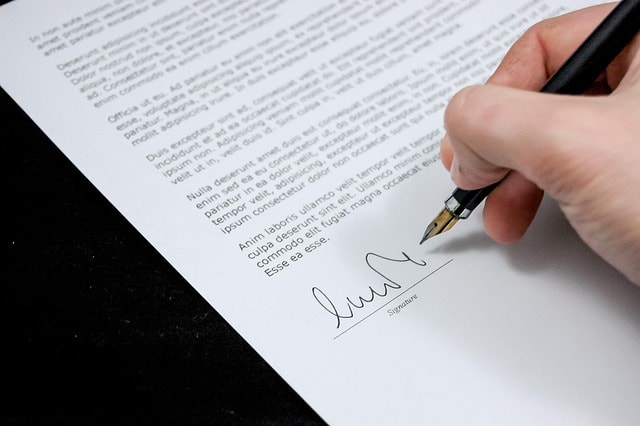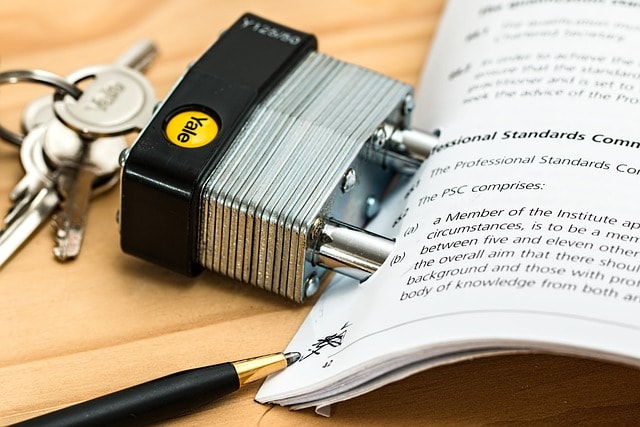The EEOC conciliation process helps resolve discrimination claims between employers and employees without going to court. Understanding this process, known as EEOC conciliation, is crucial for employees to navigate legal challenges and ensure workplace fairness. The EEOC is mandated to attempt to resolve allegations of discrimination through conciliation discussions before filing a lawsuit against an employer. This guide will explain the steps involved and how to prepare for conciliation successfully.
Key Takeaways
- The EEOC conciliation process serves as a mediation tool for resolving employment discrimination cases, promoting open communication between employers and employees.
- Key steps include filing a discrimination complaint, EEOC investigation, issuing determination letters, and engaging in conciliation discussions to reach a negotiated settlement.
- Participating in conciliation offers employers benefits like cost savings, efficient resolutions, and the ability to maintain positive workplace relationships, while avoiding the adversarial nature of litigation.
- A settlement offer during the EEOC conciliation process allows employers to either accept or reject terms that may include modifications to practices, potential financial compensation, or non-monetary demands, facilitating a successful resolution.
Introduction to the Conciliation Process
The conciliation process is a crucial step in resolving employment discrimination complaints filed with the Equal Employment Opportunity Commission (EEOC). This process is a voluntary and informal method of resolving disputes between employers and employees, with the goal of reaching a mutually acceptable settlement agreement. The EEOC’s conciliation process is designed to provide a fair and efficient way to address workplace discrimination complaints, while also promoting equal employment opportunities.
By engaging in the conciliation process, both parties can avoid the time, expense, and adversarial nature of litigation. Instead, they work collaboratively to find a resolution that addresses the concerns raised in the discrimination complaint. This approach not only helps to resolve individual disputes but also fosters a more inclusive and respectful workplace environment.
Overview of the EEOC Conciliation Process

The EEOC Conciliation process acts as mediation or alternative dispute resolution in employment discrimination cases. If the EEOC finds evidence of discrimination or harassment, it offers conciliation to resolve issues informally, promoting communication and understanding between the parties involved.
This process goes beyond settling disputes; it addresses and rectifies problematic workplace practices, ensuring legal compliance and fostering a healthier work environment. Employers receive specific details, including allegations and legal bases, maintaining transparency and fairness throughout conciliation. The EEOC employs informal methods such as conference, conciliation, and persuasion efforts to resolve employment disputes without resorting to litigation.
Understanding the Role of the EEOC
The EEOC plays a vital role in the conciliation process, acting as a neutral third-party facilitator to help resolve employment discrimination complaints. The EEOC’s primary goal is to eliminate unlawful employment practices and promote equal employment opportunities. To achieve this goal, the EEOC conducts investigations, gathers evidence, and engages in conciliation discussions with employers and employees.
During the conciliation process, the EEOC works to ensure that both parties understand the issues at hand and have the opportunity to present their perspectives. The EEOC’s conciliation efforts are guided by the principles of fairness, impartiality, and respect for the rights of all parties involved. By facilitating open communication and negotiation, the EEOC helps to create an environment where mutually acceptable resolutions can be reached.
Steps Involved in EEOC Conciliation

The EEOC Conciliation process is designed to resolve disputes informally between employers and employees, offering a more efficient and cost-effective alternative to litigation. The process begins with the filing of a discrimination complaint and proceeds through several key steps.
These steps include the investigation of the complaint, issuance of determination letters, and the initiation of conciliation discussions. During these discussions, the EEOC takes an active role by representing individuals and explaining the evidence found that led to a Letter of Determination. The EEOC collaborates with the employer to reach a resolution, which can involve financial settlements or changes in workplace policies. Each step is crucial in ensuring that the parties involved have a clear understanding of the issues and the evidence, paving the way for a negotiated settlement that satisfies both parties.
Filing and Investigation of Discrimination Complaints
The journey begins with the filing of a Charge of Discrimination by an aggrieved employee. This can be done online, by mail, or in person, making it accessible and straightforward. Once the charge is filed, the EEOC conducts an eeoc investigation, which involves requesting supporting documents, interviewing witnesses, and possibly visiting the workplace, with charges filed as part of the process. An EEOC investigator may be involved in this thorough examination to identify aggrieved individuals.
During this phase, an intake specialist schedules an interview to gather more detailed information and notifies the employer of the complaint. If the EEOC finds reasonable cause to believe discrimination occurred, the conciliation process is initiated, setting the stage for potential resolution.
Issuance of Determination Letters
The issuance of a determination letter marks a pivotal point in the EEOC process. If the EEOC finds insufficient evidence to support a claim of discrimination or harassment, it issues a ‘Dismissal and Notice of Rights,’ which informs the complainant of their right to file a lawsuit independently, thereby concluding the EEOC’s involvement in the case. This letter informs the parties whether the EEOC found sufficient evidence of discrimination or if the investigation was inconclusive. It serves as a formal communication of the investigation’s findings and sets the stage for the next steps.
Initiating Conciliation Discussions
Conciliation discussions begin with the issuance of a Letter of Determination, which communicates the findings of the investigation. If the EEOC concludes a reasonable violation cannot be determined, a letter is issued to the complainant detailing their rights. If reasonable cause is found, the EEOC is required to engage in conciliation efforts before any lawsuit can be initiated. The EEOC plays a critical role in representing the aggrieved individual and facilitating a settlement with the employer.
These discussions are designed to be collaborative and non-confrontational, providing an opportunity for both parties to negotiate terms and reach a settlement that addresses the issues raised in the complaint. Mediation is optional but can be a valuable tool in reaching an amicable resolution.
Key Elements of a Conciliation Agreement

A well-crafted conciliation agreement is essential to resolving employment discrimination disputes effectively. Such agreements should clearly outline the obligations of both parties, ensuring mutual understanding and compliance. They often include provisions for targeted equitable relief, such as customized training and the development of new policies.
These agreements aim to address the root causes of discrimination and include measures to prevent future occurrences. Employers are encouraged to negotiate terms that align with their operational needs while addressing the EEOC’s findings. Additionally, understanding the legal issues involved in the EEOC conciliation process is crucial. These legal issues can influence the employer’s options during and after the conciliation process, particularly regarding potential litigation and the necessity for legal counsel to navigate these complexities effectively. This collaborative approach helps foster a more inclusive and compliant workplace environment.
Financial Compensation and Policy Changes
Conciliation settlements often include financial compensation for the aggrieved individuals and enforceable commitments to settle workplace policies that have been settled. These settlements can vary significantly based on the specific circumstances of each case, allowing for tailored solutions that address both compliance needs and the grounds of the EEOC’s findings.
Employers are encouraged to negotiate terms that reflect their operational needs and address the issues identified by the EEOC. With the new rules applied to claims filed under various acts, understanding and responding to the EEOC’s claims has become more transparent. This may involve proposing adjustments to settlement terms to better align with their interests and concerns, ensuring that the agreement is both fair and practical, in line with equal employment opportunity standards.
Monitoring Compliance and Reporting
Monitoring compliance with conciliation agreements is crucial to ensuring that all parties comply with their obligations. This often involves regular audits and reporting mechanisms that provide valuable insights into whether the terms of the agreement are being met to monitor compliance.
Such measures foster accountability and encourage proactive compliance to ensure compliance among employers.
Confidentiality and Public Disclosure
Confidentiality is a fundamental aspect of the EEOC conciliation process, allowing sensitive issues to be handled privately and protecting the interests of both parties. Engaging in conciliation helps maintain confidentiality, ensuring that the details of the dispute are not disclosed publicly, which can be crucial for preserving professional relationships and reputations.
Title VII Considerations
Title VII of the Civil Rights Act of 1964 is a federal law that prohibits employment discrimination based on race, color, religion, sex, or national origin. The EEOC is responsible for enforcing Title VII and ensuring that employers comply with its provisions. In the conciliation process, the EEOC considers the requirements of Title VII and works to resolve employment discrimination complaints in a manner that is consistent with the law.
Employers must be aware of their obligations under Title VII and take proactive steps to prevent employment discrimination in the workplace. This includes implementing policies and practices that promote equal employment opportunities and addressing any issues that may arise. By understanding and complying with Title VII, employers can create a more inclusive and equitable work environment.
Employer’s Response to Conciliation Offers

Employers play a critical role in the conciliation process, and their response to conciliation offers can significantly impact the outcome. It’s essential to respond promptly to maintain good standing with the EEOC and adhere to specific timelines.
Conciliation discussions, involving both written and oral communications, provide employers a platform to address allegations and negotiate terms in a file. Legal counsel is in the best position to evaluate settlement possibilities during litigation, determine the appropriateness of mediation, and negotiate effective settlement terms. Prompt and thoughtful responses can facilitate a more efficient resolution and help avoid potential litigation.
Evaluating Settlement Terms
When evaluating settlement terms, employers should consider the financial implications and whether the terms align with their operational policies. Enhanced information provided by the EEOC considers employers to better prepare for negotiations and ensure that the settlement is reasonable and practical. Here is a link to a tool to help evaluate the value of an EEOC claim by an employee.
Negotiating Modifications
Employers have the opportunity to negotiate modifications to conciliation agreements to better fit their needs. This flexibility allows for a more tailored settlement that addresses the specific circumstances of the case and the employer’s operational requirements.
Potential Outcomes of Rejection
Rejecting a conciliation offer can lead to various outcomes, including potential litigation. If conciliation fails, the EEOC may pursue legal action or issue a Right to Sue letter, allowing the complainant to file suit and make a claim for independent legal action.
Careful consideration of the consequences is necessary before rejecting an offer.
The Role of Attorneys in the EEOC Conciliation Process

Attorneys play a vital role in guiding employers through the EEOC conciliation process. Their expertise helps navigate the complexities of the process, ensuring that employers’ rights are protected and that strategic plans are developed in compliance with legal requirements.
The EEOC acts as a neutral mediator during conciliation, presenting evidence to both parties to facilitate a potential settlement with the Equal Employment Opportunity Commission. Attorneys provide essential legal representation, advocating for the employer’s interests and aiming for a favorable resolution. The EEOC’s General Counsel oversees the litigation and settlement processes, ensuring that the agency’s procedural guidelines are followed. This includes consulting with aggrieved individuals regarding their claims and the relief that may be achieved.
Legal Guidance and Strategy
Legal guidance is crucial for navigating the EEOC conciliation process effectively. Attorneys help develop strategic plans that align with the employer’s goals while ensuring compliance with legal requirements, avoiding potential legal pitfalls.
Representation During Negotiations
During conciliation negotiations, attorneys provide essential representation to employers, advocating for favorable settlement terms and enhancing the chances of reaching a mutually agreeable resolution.
Ensuring Compliance and Avoiding Future Claims
Attorneys assist in ensuring that the terms of conciliation agreements are adhered to and help implement measures to prevent future discrimination claims. An attorney advises companies on best practices to maintain compliance and mitigate future legal risks.
Recent Changes to the EEOC Conciliation Rules
Recent changes to the EEOC conciliation rules aim to create a more structured and transparent process. These updates focus on enhancing clarity, imposing stricter timelines, and increasing transparency to facilitate more effective dispute resolution.
The EEOC takes a significant role in the conciliation process by representing individuals and explaining the evidence found that led to a Letter of Determination. The EEOC collaborates with the employer to reach a resolution, which can involve financial settlements or changes in workplace policies. Employers now have greater discretion to accept or reject the EEOC’s settlement proposals, encouraging a more collaborative approach over adversarial litigation. Employers must understand these changes to navigate the conciliation process effectively.
Supreme Court Rulings Affecting Conciliation
Supreme Court rulings, such as the decision in Mach Mining, have significantly impacted the EEOC conciliation process, as the supreme court held that the EEOC’s conciliation efforts are statutorily required to be subject to judicial review, although the court’s oversight is limited.
Grasping these rulings is essential for navigating the legal landscape of conciliation.
New Requirements for EEOC Transparency
The new requirements for EEOC transparency mandate that employers be informed about the allegations made against them and the EEOC’s decision-making process. This increased transparency helps employers better understand the claims and prepare for conciliation discussions.
Implications for Employers
The new EEOC rules require the agency to disclose a summary of facts and how the law was applied, providing employers with a clearer understanding of the strength of the EEOC’s claims. This transparency benefits employers by allowing them to make more informed decisions during the conciliation process.
These changes encourage a more collaborative approach to dispute resolution, helping employers resolve issues more efficiently and effectively. Grasping these implications is crucial for navigating the updated conciliation process successfully.
Benefits of Participating in EEOC Conciliation
Participating in the EEOC Conciliation process offers numerous benefits for employers. This alternative dispute resolution method aims to resolve employment discrimination claims amicably, often before any legal action is taken. Engaging in conciliation allows employers to address employee grievances through open communication and collaboration, reducing the likelihood of adversarial litigation.
The EEOC’s required process for conciliation involves the use of informal methods, including conference, conciliation, and persuasion efforts, to resolve employment disputes without resorting to litigation. This approach provides a more cost-effective and efficient resolution compared to court proceedings. Employers can avoid the high costs and potential reputational damage associated with litigation, fostering a more inclusive workplace environment in the process.
Cost Savings and Efficiency
The conciliation process is known for its efficiency and cost savings. Approximately 40% of workplace discrimination charges found to have reasonable cause are successfully resolved through conciliation. This average processing time often takes less time than court proceedings, allowing employers to avoid lengthy and costly litigation.
Engaging in EEOC conciliation can lead to faster resolutions and significantly reduce the financial burden of legal disputes.
Preserving Workplace Relationships
Conciliation encourages dialogue and cooperation, which can help preserve an ongoing relationship. By addressing disputes through open communication rather than conflict, employers can maintain positive relationships with employees.
Fostering a culture of understanding and respect, this process is essential for a harmonious workplace.
Voluntary and Non-Adversarial Resolution
One of the key advantages of the conciliation process is its voluntary and non-adversarial nature. Parties can engage in discussions without the pressure of a court setting, allowing for a more relaxed and collaborative informal conciliation party environment.
This voluntary process enables both parties to negotiate terms and reach a mutually agreeable resolution in the normal course, avoiding the stress and adversarial nature of litigation.
Successor Liability
Successor liability is an important consideration in the conciliation process, as it can impact the resolution of employment discrimination complaints. Successor liability refers to the liability of a successor employer for the discriminatory actions of its predecessor. The EEOC considers successor liability when evaluating employment discrimination complaints and may hold a successor employer liable for the actions of its predecessor.
Employers must be aware of their potential successor liability and take steps to ensure that they are not liable for the discriminatory actions of their predecessors. This includes conducting thorough due diligence during mergers and acquisitions and implementing measures to address any existing issues. By being proactive, employers can mitigate the risk of successor liability and promote a fair and compliant workplace.
Breach of the Agreement
A breach of the conciliation agreement can have significant consequences for employers and employees. If an employer breaches the agreement, the EEOC may file a lawsuit in federal court to enforce the terms of the agreement. Employers must comply with the terms of the conciliation agreement and take steps to prevent breach.
The EEOC monitors compliance with the agreement and may take enforcement action if an employer fails to comply. This can include seeking court orders to enforce the agreement and imposing penalties for non-compliance. Employees must also be aware of their rights and obligations under the conciliation agreement and seek legal advice if they believe that their employer has breached the agreement.
By adhering to the terms of the conciliation agreement, both employers and employees can ensure that the resolution reached is effective and lasting, promoting a fair and respectful workplace environment.
Summary
Understanding the EEOC Conciliation process is crucial for employers looking to resolve discrimination complaints efficiently and effectively. This process provides a collaborative and cost-effective alternative to litigation, helping employers address issues proactively and maintain a positive workplace environment. Key steps include filing and investigating complaints, issuing determination letters, and engaging in conciliation discussions to reach a negotiated settlement.
By participating in the EEOC Conciliation process, employers can benefit from cost savings, preserved workplace relationships, and a voluntary, non-adversarial resolution method. Staying informed about recent changes to the EEOC rules and the role of attorneys can further enhance the effectiveness of this process. Embrace the opportunity to resolve disputes amicably and foster a more inclusive and respectful workplace.
Frequently Asked Questions
What is the main purpose of the EEOC Conciliation process?
The main purpose of the EEOC Conciliation process is to informally resolve employment discrimination disputes, helping both parties communicate and comply with legal standards. It’s all about finding a middle ground without the need for a lengthy legal battle. Here is a link to an article about more of the EEOC process, including mediation.
What steps are involved in the EEOC Conciliation process?
The EEOC conciliation process involves filing a discrimination complaint, having it investigated, getting a determination letter, and then opening discussions to negotiate a settlement. It’s all about finding a resolution that works for both sides.
How can employers benefit from participating in the EEOC Conciliation process?
Participating in the EEOC Conciliation process helps employers save money, maintain good workplace relationships, and find resolutions without the stress of lawsuits. It’s a smart move that keeps things friendly and cost-effective!
What role do attorneys play in the EEOC Conciliation process?
Attorneys help employers navigate the EEOC conciliation process, negotiate on their behalf, and make sure agreements are followed to avoid future claims. Basically, they’re your legal sidekick in making sure everything goes smoothly!
What recent changes have been made to the EEOC Conciliation rules?
The new EEOC Conciliation rules focus on making the process more structured and transparent, pushing for better communication and faster timelines to resolve disputes. This should help things move along more smoothly!



